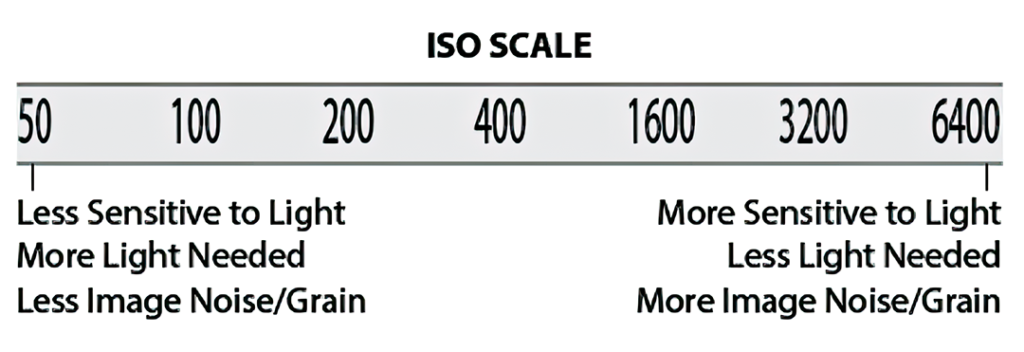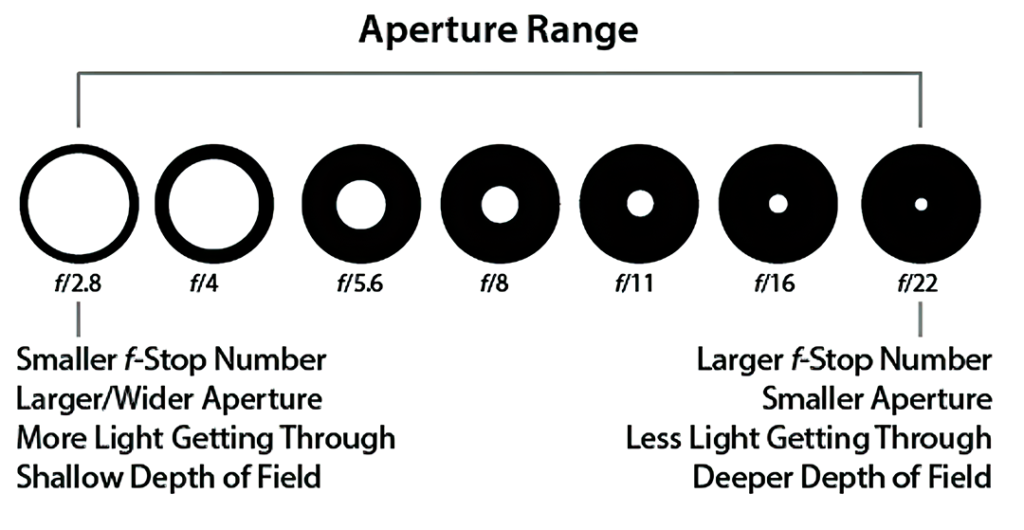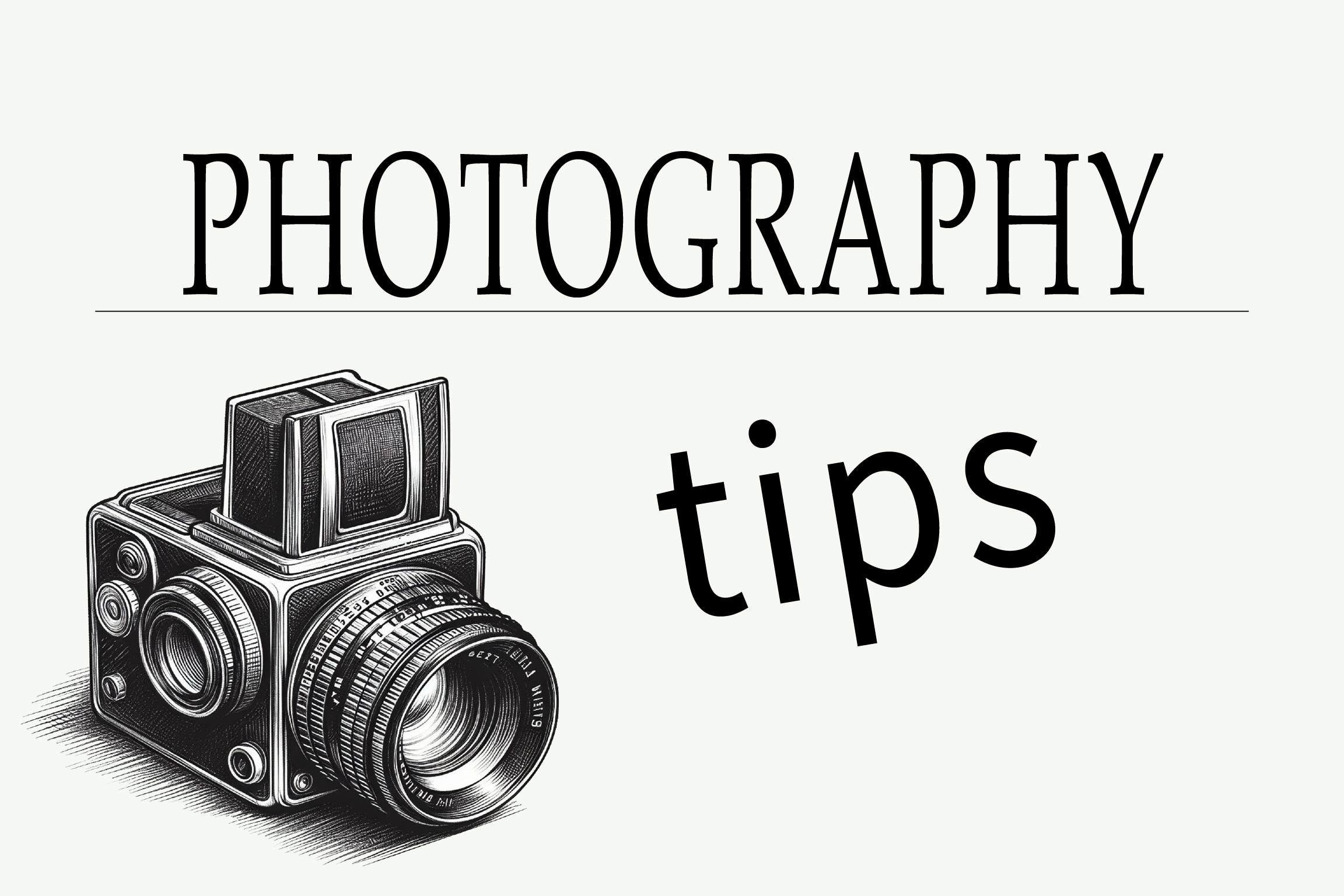In my first installment of Photography Tips, I will give you a breakdown of the three camera variables and how to combine them to make the picture you want. The three variables of photography are ISO, Shutter Speed, and Aperture or f-Stop. All three variables affect the amount of light entering the camera and since light is the constant of this equation, let’s remove it and simplify their role in photography. There will be more on light in a later article.
ISO
ISO is the sensitivity of your sensor, and its principal effect on your images is whether or not they have Noise or Grain. For example, if you set your ISO to 3200 (making your sensor more sensitive), you can take pictures in very low light or of action or sports, but if you zoom in, the image will be pixelated. On the contrary, taking a picture at ISO 100 will be smooth, and you can zoom in and see details.

Shutter Speed
Shutter Speed is how fast the shutter opens and closes; its primary effect is on time. Shutter Speed is measured in seconds or fractions of a second, so do you want to capture a split second or a whole minute? For example, if you wish to capture the moment a ball is hit off the end of a bat, you may need to use a Shutter Speed of 1/1000 or one-thousandths of a second. On the other hand, you may want to show the nice fluid motion of a waterfall, and, in that case, you would wish to use a Shutter Speed of 1 or one second. An important rule in Shutter Speeds is that when it’s less than 1/60, you become susceptible to camera shake or blur. Camera shake is the human hand not having the ability to hold your camera still enough to take a picture without making it blurry. Now, blur isn’t always bad; don’t forget about the beautiful waterfall or the ability to give an object the feeling of motion.

Aperture
Aperture is quite simply the size of the opening in the lens when you take the photo. Aperture is measured in f-stops, often written in this form f/1.4 or f/32, where f/1.4 represents a big opening and f/32 is a relatively small opening. When people talk about aperture, they may say things like, you want to open up your lens as far as it goes, and this is about the smallest f-stop available, typically f/2.8 or f/5.6. On the other side of the scale, you might hear someone say that you want to close down your lens, which is often about setting your f-stop as high as it will go, sometimes f/22 or even f/32.
Aperture plays its biggest role in your photos by affecting the depth of field; you have the ability to make just the tip of a finger be in focus by selecting f/1.4 or as far as the eye can see by using f/22. This is where blur makes an appearance again if you choose to make only your fingertip be in focus, objects in front of and behind it will become blurry; the amount of blur is increased the greater the distance from the focal point.

Combining the Variables
Bring it all together; typically, when you make images, you adjust for 2 of the settings and let the other one fall where it may. Here are some examples: Let’s say you want to take a picture of a grand landscape; I would first set the ISO to 100 (or the lowest setting you have available). This will allow your image to be smooth and full of detail. Then, you will want to set your Aperture to f/16 or /22, allowing you to capture detail from the foreground to the background. Another possible scenario might be you want to catch someone hitting a ball; in this case, you will want to set your shutter speed to at least 1/500, allowing you to freeze time. Next, you will want to bump up your ISO to 800 or even 1600, making your camera extra sensitive and able to capture an image quickly. A similar technique could be used to capture an animal running across a field.

